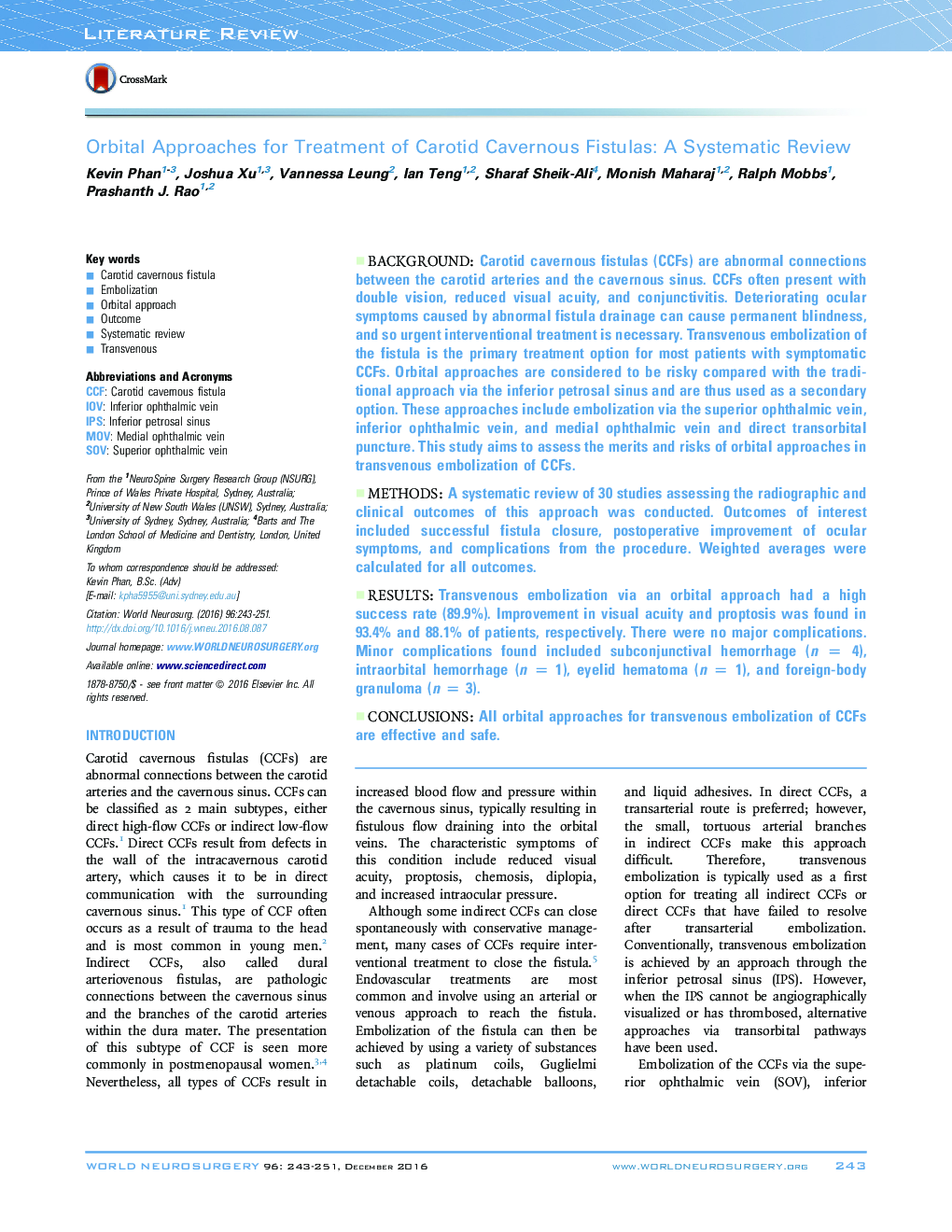| Article ID | Journal | Published Year | Pages | File Type |
|---|---|---|---|---|
| 5635073 | World Neurosurgery | 2016 | 9 Pages |
BackgroundCarotid cavernous fistulas (CCFs) are abnormal connections between the carotid arteries and the cavernous sinus. CCFs often present with double vision, reduced visual acuity, and conjunctivitis. Deteriorating ocular symptoms caused by abnormal fistula drainage can cause permanent blindness, and so urgent interventional treatment is necessary. Transvenous embolization of the fistula is the primary treatment option for most patients with symptomatic CCFs. Orbital approaches are considered to be risky compared with the traditional approach via the inferior petrosal sinus and are thus used as a secondary option. These approaches include embolization via the superior ophthalmic vein, inferior ophthalmic vein, and medial ophthalmic vein and direct transorbital puncture. This study aims to assess the merits and risks of orbital approaches in transvenous embolization of CCFs.MethodsA systematic review of 30 studies assessing the radiographic and clinical outcomes of this approach was conducted. Outcomes of interest included successful fistula closure, postoperative improvement of ocular symptoms, and complications from the procedure. Weighted averages were calculated for all outcomes.ResultsTransvenous embolization via an orbital approach had a high success rate (89.9%). Improvement in visual acuity and proptosis was found in 93.4% and 88.1% of patients, respectively. There were no major complications. Minor complications found included subconjunctival hemorrhage (n = 4), intraorbital hemorrhage (n = 1), eyelid hematoma (n = 1), and foreign-body granuloma (n = 3).ConclusionsAll orbital approaches for transvenous embolization of CCFs are effective and safe.
